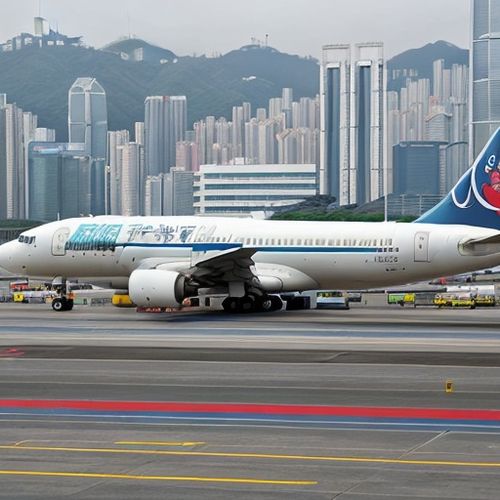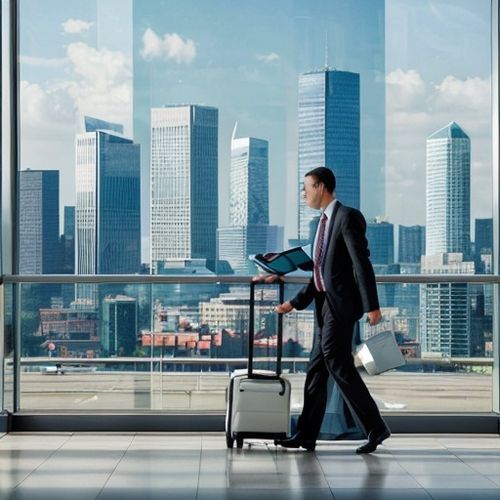The American business travel industry has faced a sluggish recovery, with current activity hovering at just 78% of pre-pandemic levels. While many expected a rapid rebound as COVID-19 restrictions eased, corporations have been surprisingly reluctant to return to previous travel volumes. This trend reflects deeper shifts in corporate priorities, technological adoption, and financial strategies that may permanently alter how companies approach business travel.
A fundamental reassessment of travel's return on investment lies at the heart of this trend. Before the pandemic, business trips were often approved with minimal scrutiny, viewed as an essential cost of doing business. However, extended periods of remote collaboration forced companies to examine the actual value derived from face-to-face meetings. Many discovered that video conferencing could effectively replace a significant portion of travel, particularly for routine check-ins or internal meetings. The dramatic reduction in travel expenses during lockdowns provided concrete evidence of potential savings, making executives question why they had been spending so much on travel previously.
The economic environment has further discouraged travel spending. With rising airfare, hotel rates, and overall inflation squeezing corporate budgets, CFOs are demanding stricter justification for travel expenditures. What was once considered a standard perk for sales teams or management is now subject to rigorous cost-benefit analysis. Companies report implementing multi-layer approval processes for trips and setting higher thresholds for when travel gets authorized. Some have established clear guidelines requiring demonstrated revenue potential or strategic importance that can't be achieved virtually.
Employee preferences and workforce changes have also influenced travel policies. Many professionals who frequently traveled before the pandemic now resist returning to that lifestyle, having experienced the benefits of reduced travel. Younger workers in particular show less enthusiasm for business trips, valuing work-life balance over potential career advancement from face-to-face networking. Companies competing for talent find they must accommodate these preferences, leading to more selective travel approvals. Additionally, the rise of distributed workforces means employees often need to travel just to meet colleagues, rather than clients - a harder expense to justify when alternative collaboration tools exist.
Environmental concerns have moved from peripheral consideration to mainstream factor in travel decisions. Corporations facing pressure to meet sustainability goals recognize that business travel constitutes a major portion of their carbon footprint. While not necessarily eliminating travel entirely, many companies have incorporated emissions calculations into their approval processes. Some have implemented internal carbon budgets or partnered with vendors offering carbon offset programs. What was once purely a financial decision now carries environmental implications that align with corporate social responsibility commitments and stakeholder expectations.
The nature of business relationships has evolved in ways that reduce travel necessity. During the pandemic, companies developed new protocols for establishing trust and maintaining connections virtually. Industries that traditionally relied heavily on in-person interactions - like manufacturing, pharmaceuticals, and professional services - created effective alternatives. While most executives agree that nothing fully replaces face-to-face meetings for complex negotiations or relationship-building, they've become more strategic about when physical presence provides maximum value. Routine account management and standard sales presentations have largely moved online permanently.
Technological advancements have filled gaps that previously required travel. Beyond basic video conferencing, companies now utilize virtual reality for product demonstrations, augmented reality for remote equipment inspections, and sophisticated digital collaboration platforms that simulate in-person workshops. These tools don't just replicate travel experiences - in some cases they offer superior functionality, like the ability to record and analyze meetings or instantly translate between languages. As these technologies improve and become more affordable, they provide compelling alternatives to physical travel.
Risk management considerations continue to influence travel policies. The pandemic demonstrated how quickly health crises or geopolitical events could strand employees and disrupt operations. Many companies maintain travel risk assessment protocols developed during COVID-19, weighing potential disruptions against trip benefits. Some have established permanent "essential travel only" policies for certain regions or scenarios. The memory of last-minute cancellations, quarantine requirements, and border closures remains fresh, making organizations cautious about over-relying on physical mobility.
The shift in business travel patterns shows no signs of reversing fully. While certain industries and functions will always require substantial travel, the overall corporate approach has fundamentally changed. Companies aren't just cutting costs - they're reimagining how to achieve business objectives in a world where physical presence is no longer the default solution. The 78% recovery level may represent a new equilibrium rather than a temporary pause on the way to full rebound. As organizations continue to refine their blended approach of selective travel and virtual alternatives, the pre-pandemic volume of business trips may never return.
This transformation carries significant implications for the travel industry. Airlines, hotels, and conference centers can't simply wait for a full recovery - they must adapt to a market where business travel is more purposeful, more selective, and often combined with leisure elements. The most successful providers will be those that help corporations maximize the value of each trip while addressing concerns about cost, sustainability, and employee satisfaction. The future of business travel isn't about returning to 2019 levels, but about finding the right balance for a changed corporate landscape.

By Elizabeth Taylor/Apr 11, 2025

By Christopher Harris/Apr 11, 2025

By William Miller/Apr 11, 2025

By Rebecca Stewart/Apr 11, 2025

By Megan Clark/Apr 11, 2025

By Grace Cox/Apr 11, 2025

By Benjamin Evans/Apr 11, 2025

By Victoria Gonzalez/Apr 11, 2025

By Thomas Roberts/Apr 11, 2025

By James Moore/Apr 11, 2025

By George Bailey/Apr 11, 2025

By Lily Simpson/Apr 11, 2025

By Megan Clark/Apr 11, 2025

By Jessica Lee/Apr 11, 2025

By Olivia Reed/Apr 11, 2025

By George Bailey/Apr 11, 2025

By Emily Johnson/Apr 11, 2025

By Victoria Gonzalez/Apr 11, 2025

By William Miller/Apr 11, 2025

By Grace Cox/Apr 11, 2025